
Stanford University: Wallenberg Hall Statues
The building that today is Wallenberg Hall (Building 160) at Stanford University was completed in 1900. Funded by the generous gift of Thomas Welton Stanford, Leland Stanford's younger brother, the building has served as the library, the administrative center, the law school and home of the department of political science during its 100-year lifespan.
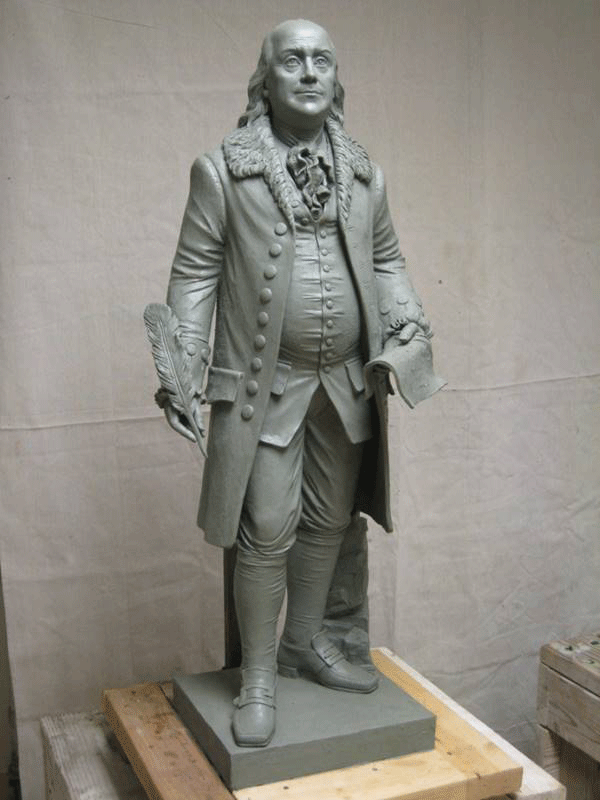
Clay model of Benjamin Franklin
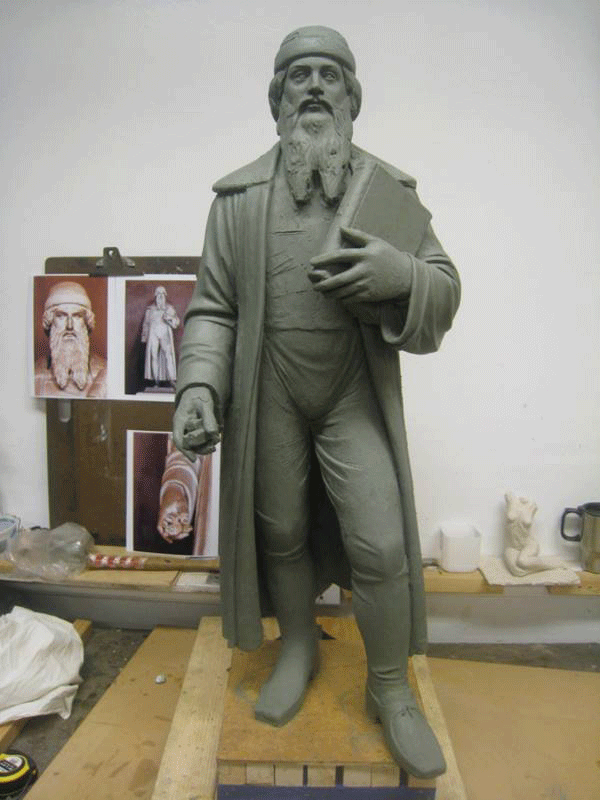
Clay model of Johannes Gutenberg

Benjamin Franklin

Johannes Gutenberg
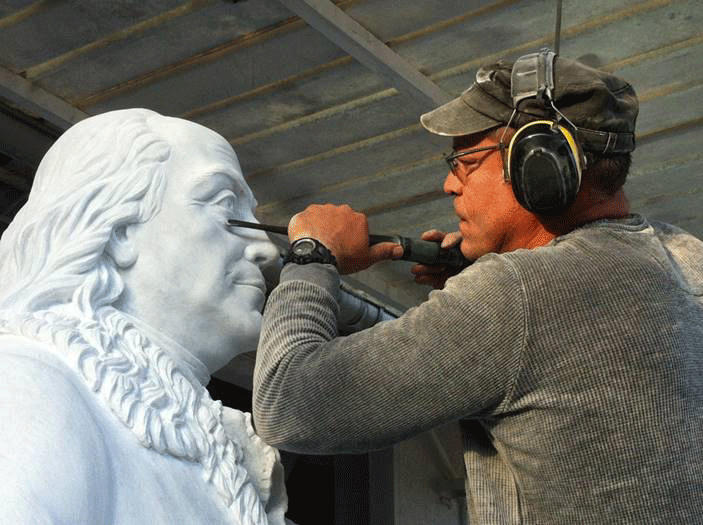
Hand Carving Franklin's Face
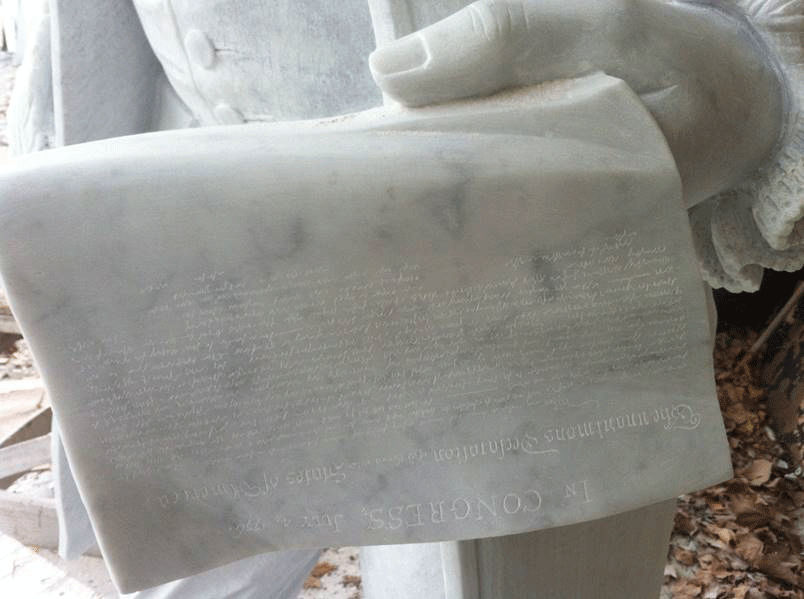
Detail of Franklin's Hand
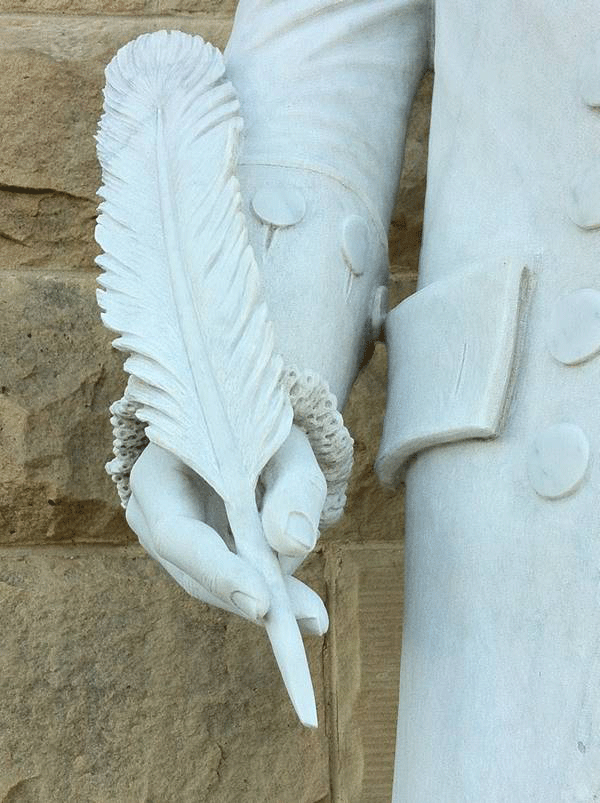
Detail of Franklin's Quill

Detail of Gutenberg's Bible
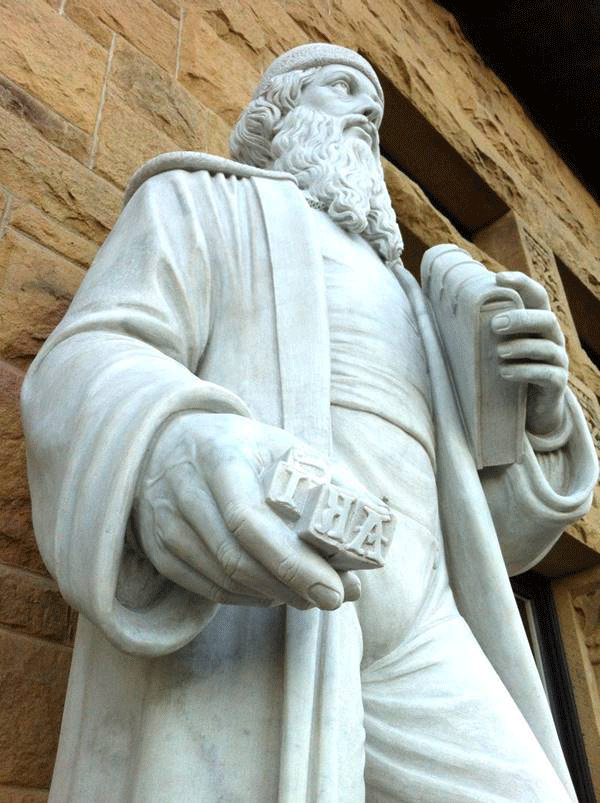
Detail of Gutenberg's Letters
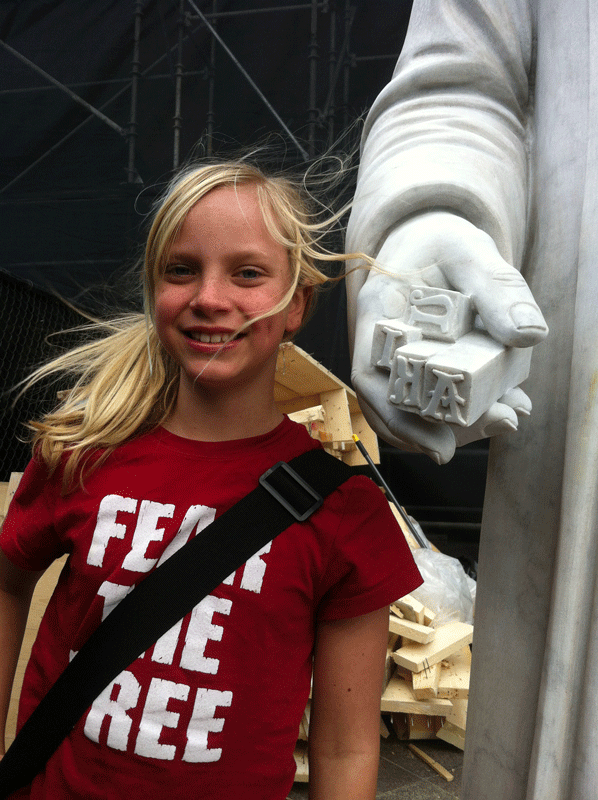
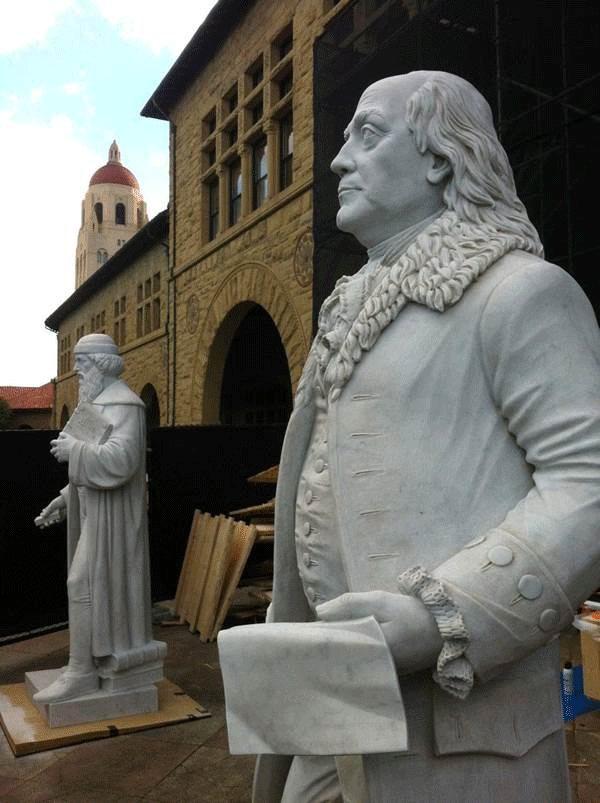
Stanford University, Wallenberg Hall Statues
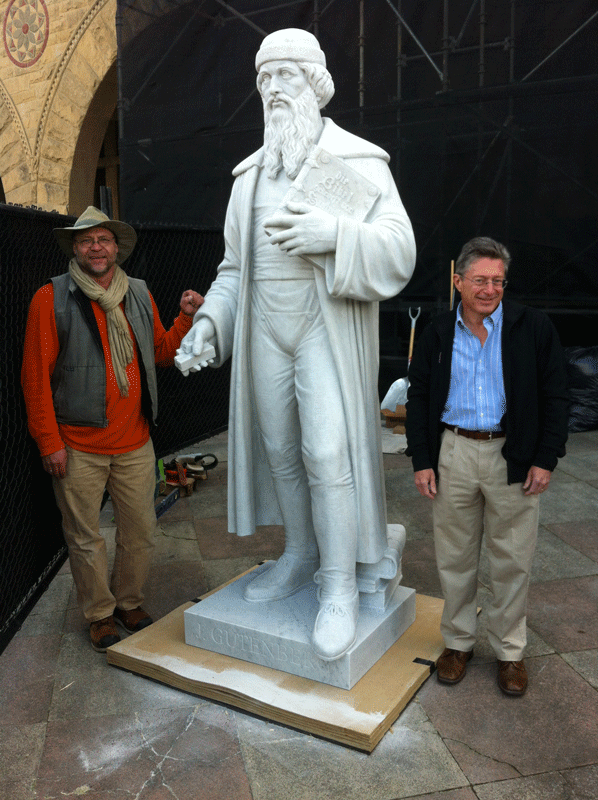
Sculptor, Oleg Lobykin, and Stanford University Provost
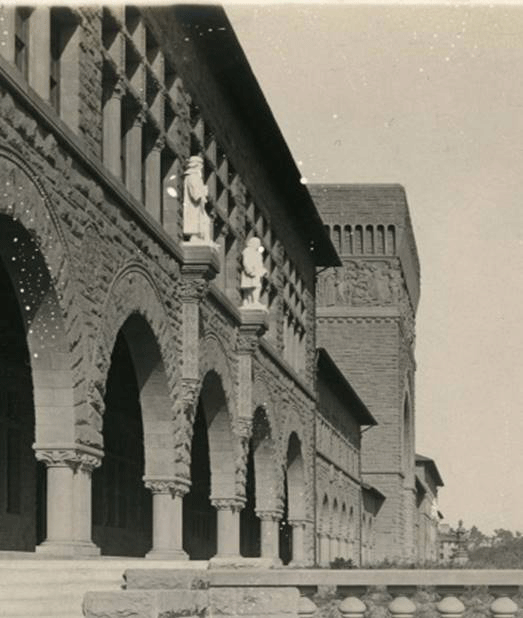
Wallenberg Hall, Early 20th Century
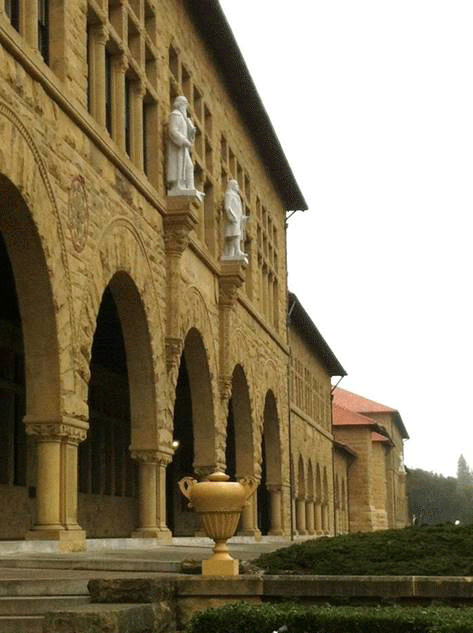
Wallenberg Hall, Early 21st Century
Two marble statues of Benjamin Franklin and Johannes Gutenberg had been mysteriously missing from their perch above Wallenberg Hall since 1949. A second pair of statues, depicting Louis Agassiz and Alexander von Humboldt, were sculpted in 1902 and still stand in place above the entry to Jordan Hall.
Stonesculpt re-created the missing statues based on historical photographs and other evidence to match the originals as closely as possible.
Research included:
Reviewing historical documents and photographs in University Archives
Collaborating with University architects and facilities managers
Design Development:
Based on historical photographs and other information about historical figures as represented visually from their time period
In collaboration with University architects and other staff
Carrara marble was selected from a quarry in Carrara, Italy. The finest marble in the world is quarried from these mountains, near where artists such as Michaelangelo lived and worked.
Our research indicated that the marble for the original sculptures was likely sourced from Italy and even to this day, the country is known for its exceptional quality stone.
A 23-ton block of marble was selected on-site at the quarry. This single block was large enough to carve the two statues.
Traditional techniques were used in the roughing out process on the statue of Franklin with set up of reference points, using calipers and hand tools.
The finished Wallenberg Hall statues were installed on January 12, 2013.
Click here to read the Stanford Report article about this project.
